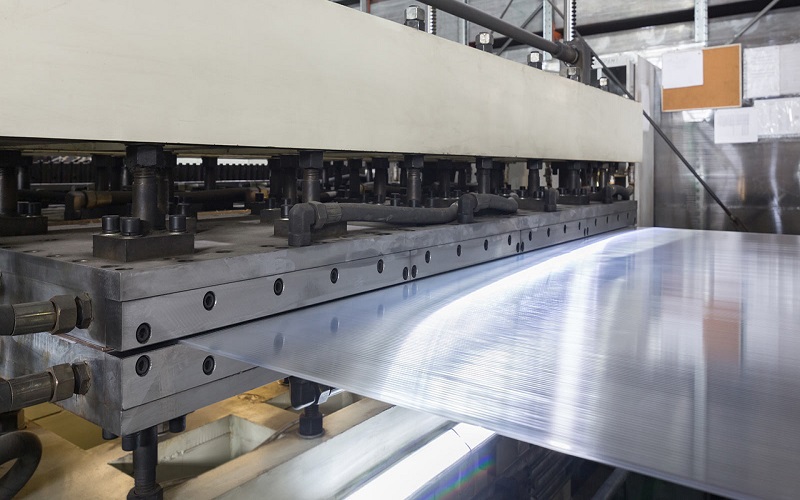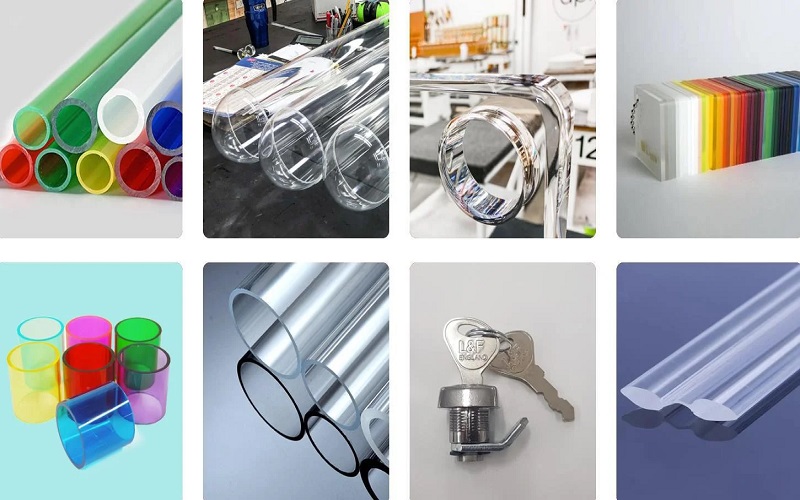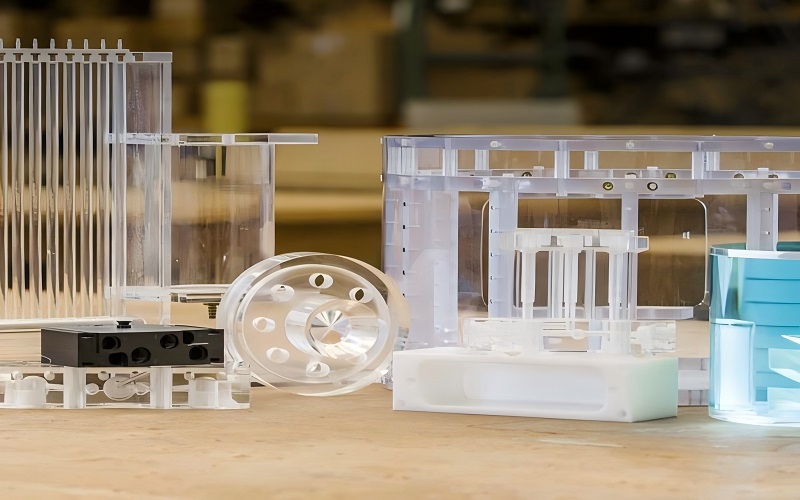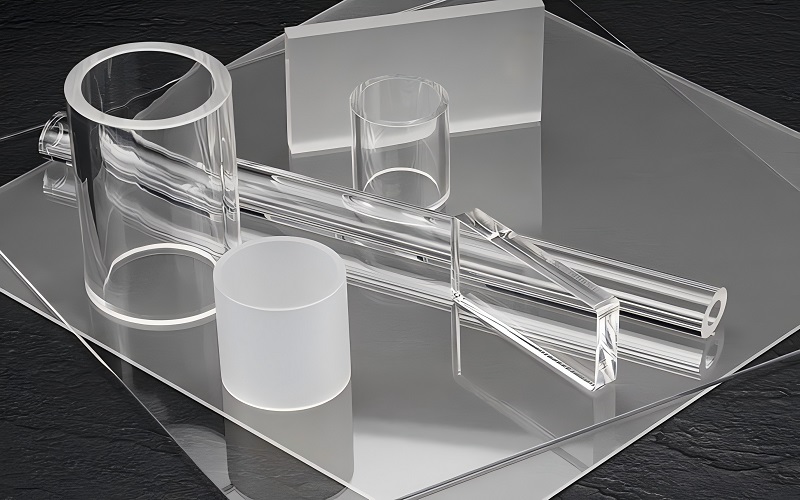Clear acrylic sheets are engineering plastics and multifunctional products. Due to their high strength and good flexibility, they are widely used in commercial, industrial, and domestic fields, and are very popular in the plastic industry.
If you are considering using clear acrylic panels in your project but are unsure if they are appropriate, this guide will provide you with a comprehensive reference.
What is Clear Acrylic Sheet?
Acrylic sheet, the main component of which is polymethylmethacrylate (PMMA), has excellent properties as a thermoplastic and is used in an extremely wide range of applications.
As a matter of fact, acrylic sheets can be available in a wide range of colors, but clear acrylic sheets are standard off-the-shelf products ready to meet a variety of needs.
Clear acrylic sheet not only fully inherits the inherent advantages of acrylic sheet, such as good strength, excellent weather resistance and processability, but also stands out for its extremely prominent high transparency.
How are Acrylic Sheets Made?
Transparent acrylic sheets are generally made through a polymerization reaction, and a variety of shapes can be easily obtained by pouring the pre-polymer into a mold after obtaining it, which is called the pour molding method.
In addition, there are two other methods on the market today: extrusion molding and thermoforming.
Extrusion molding method is the PMMA particles by the extruder plasticization, mold extrusion cooling, hauling, cutting made of sheet, high efficiency; thermoforming method is the first heating softened acrylic sheet, and then pressure or vacuum adsorption to make it according to the mold molding, commonly used in the production of complex shapes products.

Properties and Characteristics of Clear Acrylic Sheet
Clear acrylic has several key properties that make it stand out from other types of plastic, which we have listed in the table below:
| Property | Value |
| Density | 1.18 – 1.20 g/cm³ |
| Light Transmittance | 92 – 93 % |
| Refractive Index | 1.49 |
| Hardness (Rockwell M) | 90 – 105 M Scale |
| Tensile Strength | 55 – 80 MPa |
| Tensile Modulus | 2.0 – 3.3 GPa |
| Elongation at Break | 2 – 10 % |
| Flexural Strength | 80 – 110 MPa |
| Flexural Modulus | 3.0 – 3.5 GPa |
| Heat Deflection Temperature (HDT) | 95 – 105 ℃ |
Application of Clear Acrylic Sheet
Transparent acrylic is characterized by high transparency, good processing performance and weather resistance, and is widely used in many fields.
- Light box signboard
- Sunroom
- Furniture table tops, cabinet doors, drawer panels and other components
- Bathroom products
- Display panels and electric appliance housings
- Optical lenses and optics
- Medical and dental applications
- Automotive and aircraft applications

What is the Difference Between Clear Acrylic Sheet and Glass? Is Acrylic Plastic or Glass?
Clear acrylic sheet is a hard plastic, but it is easy to confuse it with glass, as acrylic is often used as a substitute for glass, as they both have excellent light transmission.
However, the material composition of the two is very different, the main component of clear acrylic sheet is polymethylmethacrylate, while the main component of glass is silicon dioxide, therefore, by nature clear acrylic sheet is plastic.
What is the Difference Between Acrylic Sheet and Plastic?
1. Different ingredients
Acrylic sheet is a polymer, the main component of which is polymethyl methacrylate. Plastic is a broad concept, including polymers, elastomers and fibers.
Plastics can also be composed of a variety of components, such as polyethylene, polypropylene, polyvinyl chloride, etc.
2.Differences in physical properties
Acrylic has high hardness, excellent impact resistance and wear resistance. It is characterized by high transparency, even more transparent than glass, lighter than glass, and good UV resistance.
The properties of plastics vary depending on the composition, such as polyethylene plastics are soft and tough, and polyvinyl chloride plastics are strong in acid and alkali resistance.
3. Different melting points and processing methods
The melting point of acrylic is around 80°C, which is higher than the melting point of general plastics. It can be processed by injection molding, extrusion molding, calendering molding and other processes.
The melting point of plastics varies depending on the type, some as low as 60C, and some as high as 100C or more. There are also many different ways to process plastics, such as extrusion, injection molding, blow molding, calendering, etc.
4. Different application fields
Due to the high transparency and excellent optical properties of acrylic, it is widely used in optical instruments, clocks, decorations, billboards and other fields.
Due to the wide variety and different properties of plastics, they are widely used in many industries such as home appliances, automobiles, construction, packaging, etc.
5. Different environmental performance
Acrylic has good environmental performance, its waste can be recycled, and it will not cause serious pollution to the environment.
The environmental performance of plastics varies significantly due to different types and materials. Some plastics will produce harmful substances during production and waste treatment, causing pollution to the environment.
Is Acrylic Toxic?
Acrylic is generally safe and non-toxic in normal use because the polymethylmethacrylate used to make it is chemically stable after polymerization.
Once it is melted, molded and cooled, it is even safe enough to be used in the medical, dental and cosmetic fields.
However, during the production of acrylic, some harmful substances may remain if poor quality additives, initiators and other auxiliary materials are used.
In addition, when acrylic is exposed to high temperatures (e.g. over 200°C) or burned, it may decompose and produce toxic gases such as carbon monoxide and formaldehyde, which are harmful to the human body.

Conclusion
Otivic offers a range of quality acrylic sheets at very competitive prices in a wide range of sizes. If you have an upcoming project, please contact us. We will be happy to introduce our products to you and answer any questions you may have.

